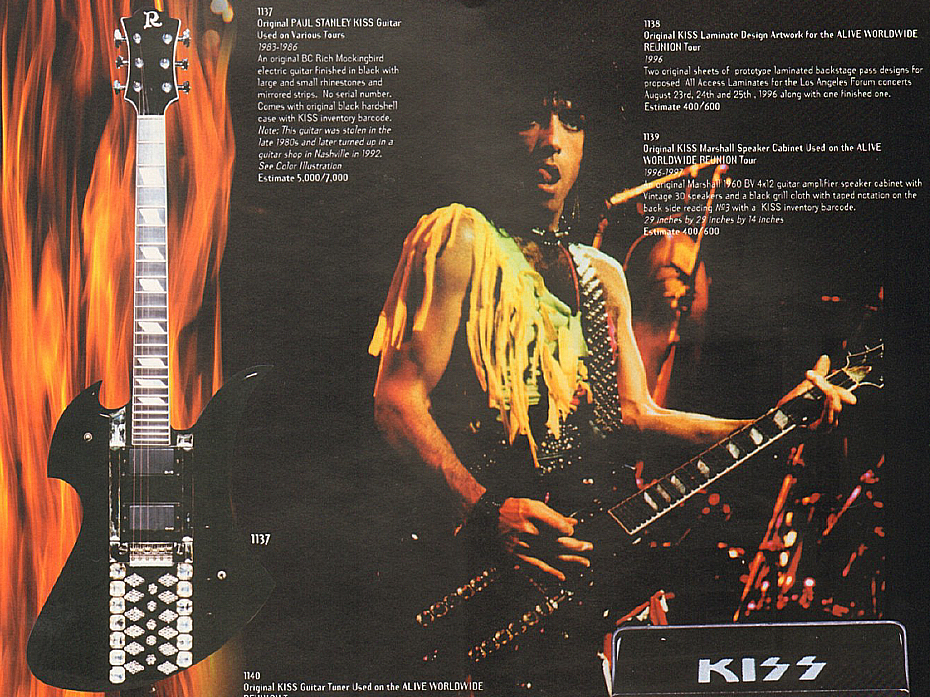1982 B.C. Rico line brouchure
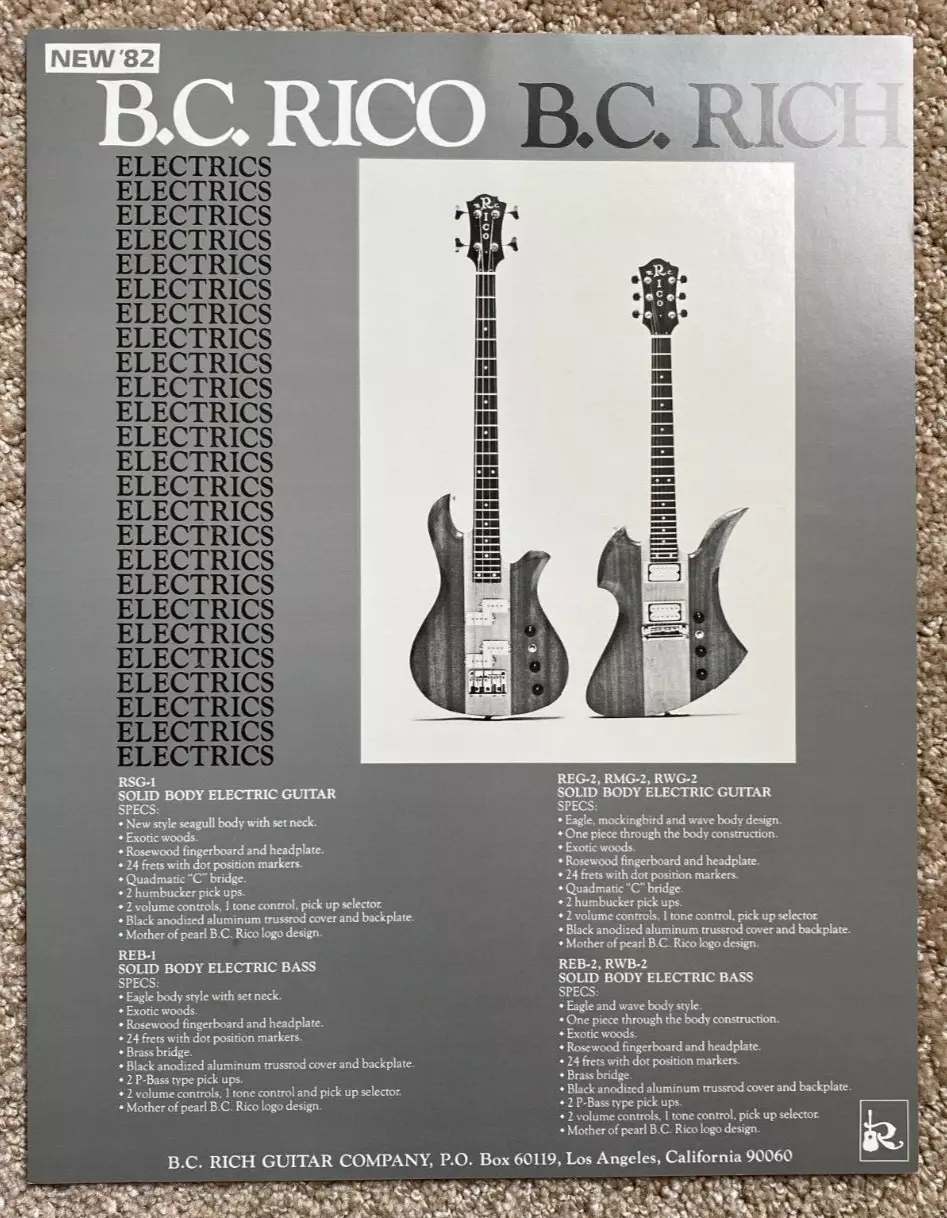
Sometime between the failed attempt of credibility that was (Music From) The Elder and the beginning of promo work for Creatures of the Night, Paul got a few new guitars. Suddenly B.C. Rich had entered the fold and the obvious question is: why? Sure, Ibanez hadn't worked out but the various Hamers had seen a lot of action. So why the change? The answer is probably as simple as recommendation. Bob Kulick had played on the new tracks on the recent release Killers and at the time he was a fan of B.C. Rich guitars. (Both Bob and Bruce were listed among the “discriminating musicians” who played B.C Rich in the company’s catalogues from 1979 to 1982.) Whatever else can be said about Bob, considering their long history it is clear that Paul respected him as a musician and it's not far-fetched to believe that he also respected his opinion on guitars.
Originally working out of Bernardo's Guitar Shop which was owned by his father, Bernardo Chavez Rico started experimenting with building guitars in the 70’s along with partners Bob Hall and Mal Stich. Under the name B.C. Rich their Seagull model hit the market as a production model in 1974. It's important to understand that B.C. Rich wasn't really a custom shop, all their guitars were based on a standard selection of models that could be had in various versions. What they were, were hand made. Bodies, necks, fretboards and electronics were all made on site while most of the hardware was, at least initially, from other manufacturers: the tuners were Grover Rotomatic Imperials, pickups were usually DiMarzios, and the bridges were Leo Quan Badass. With the introduction of the 10-string Bich in 1977 the Quadmatic bridge was introduced, mainly out of necessity.
Apart from crafting high-end handmade instruments, a big selling point to the B.C. Rich were their electronics. Almost ridiculously elaborate they allowed the user to control almost every facet of the sound. Now, our Starchild hero may have been impressed with the build quality and the playability of the B.C. Rich guitars but there were two things he did not like about them. "I remember sitting down with those guys and going, 'What the hell is this crap?! Your guitar looks like a coffee table and it's got too many switches!' A good guitar needs a volume and a tone and if you can't get what you're looking for out of that, you need a new guitar." (Vintage Guitar 1997) It would be tempting to credit Paul with B.C. Rich moving towards simplified electronics and more conventional finishes, but truth be told they had offered basic finishes since 1978 (for an additional $100) and the B.C. Rico line which was introduced in January 1982 had a control layout that was almost identical to the one Paul had on his guitars.
Based on what we have in the ways of photos the first B.C. Rich that Paul got was a black Mockingbird with some special features. (And here we can note that Bob Kulick was a fan of the Mockingbird, he used a koa version on stage with Meat Loaf in 1978-79.) Thanks to Norwegian fan Petter Vestengen Nessjøen who wrote to B.C. Rich in 1984 we have some hard facts about these guitars and Paul's Mockingbird apparently had "a maple base" which differed from the mahogany that had been his wood of choice for a number of years. (Unfortunately we don’t know if “maple base” means that it had the Supreme/Standard construction with maple neck-through/wings and rosewood stripes, or if it means the B.C. Rico construction with a maple neck-through and mahogany wings.)
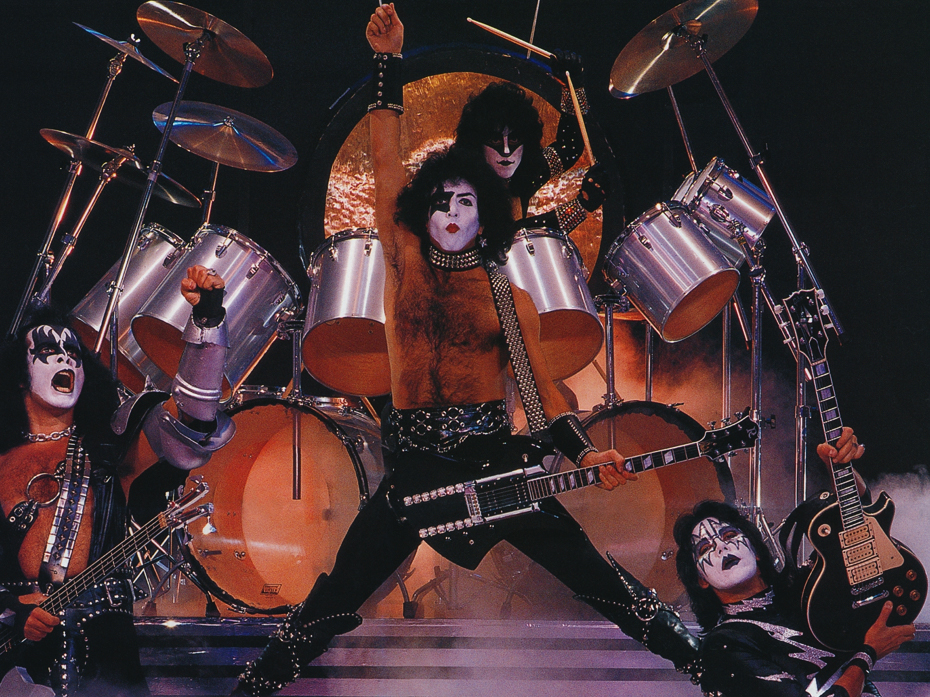
The Mockingbird was originally delivered with DiMarzio Super II pickups but these were soon replaced by EMGs. The tuners were Grover Rotomatic Imperial tuners which was standard. Not part of the standard Mockingbird options, Paul's version had binding on the neck and headstock, parallelogram pearl inlays on the ebony fretboard, a Schaller 455 bridge, and a toggle switch on the upper "horn". (The latter was probably directly inspired by the custom Hamer Standards.) Most notably from a visual standpoint, it had gemstone "trim" of "multifaceted Swedish crystal" running the length of the body.
The Mockingbird was used as a backup during the 10th Anniversary Tour and since Paul relied on his trusted Hamers it saw very little use. Even compared to the newly acquired Eagles the Mockingbird shows up in very few photos. As far as we know Paul only reached for it twice—see photos below—but Vinnie relied on it quite a bit during the first half of January 1983. In Paul’s case this seems about right. He had gotten two of his Hamers re-finished with animal print themes and acquired two new B.C. Rich Eagles with leopard-like finishes. With its black-and-bling look the Mockingbird was the odd guitar out, it didn't fit in with the creature/animal theme.
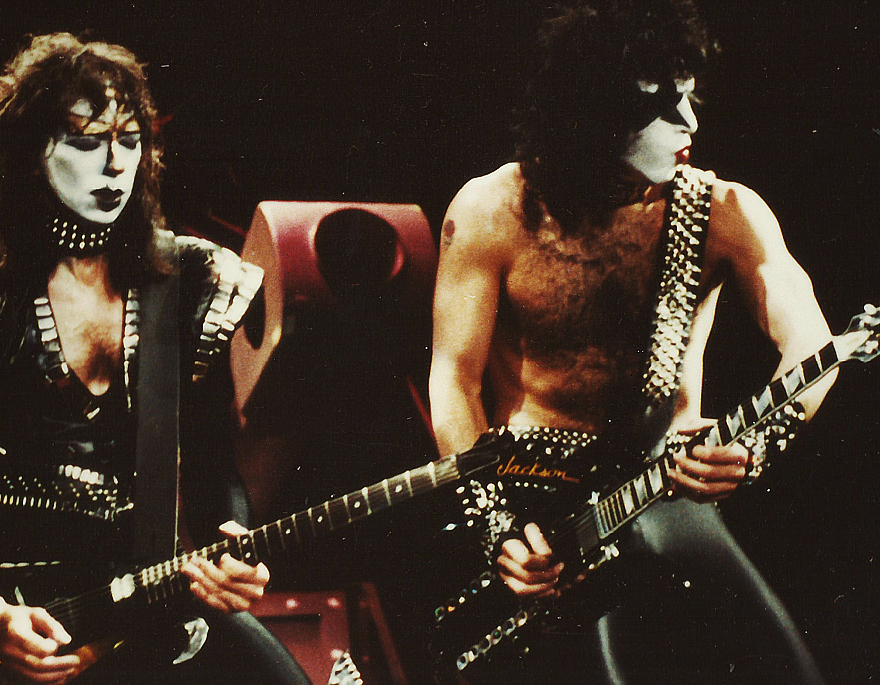
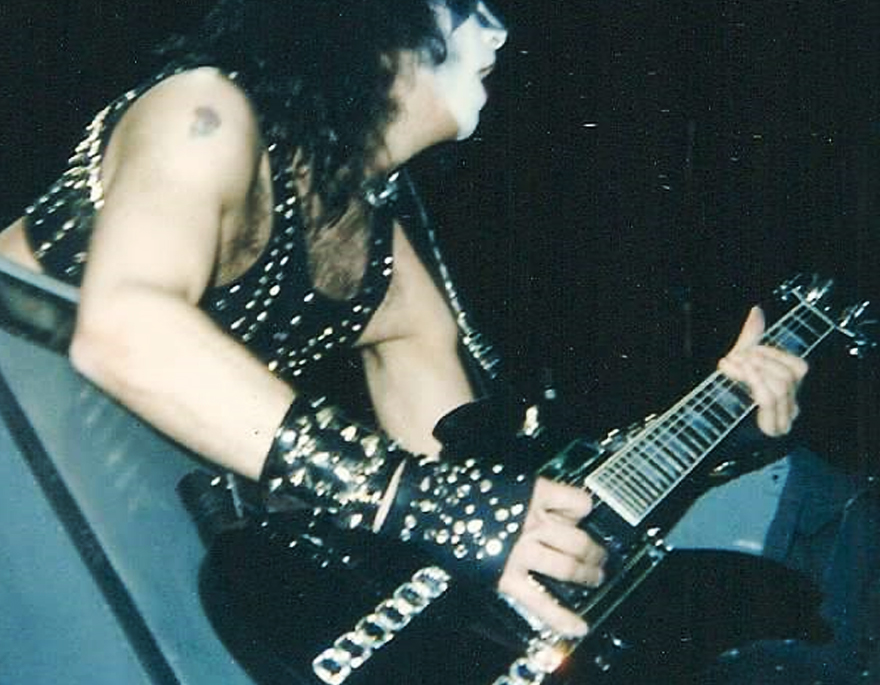
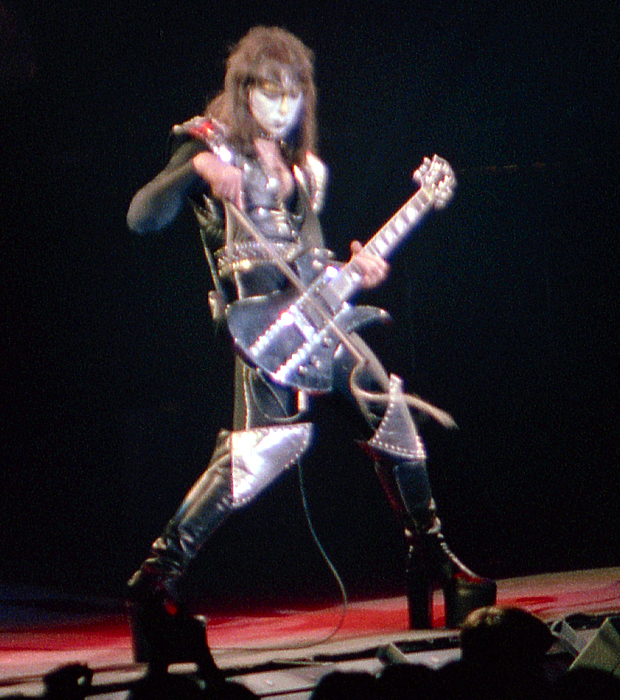
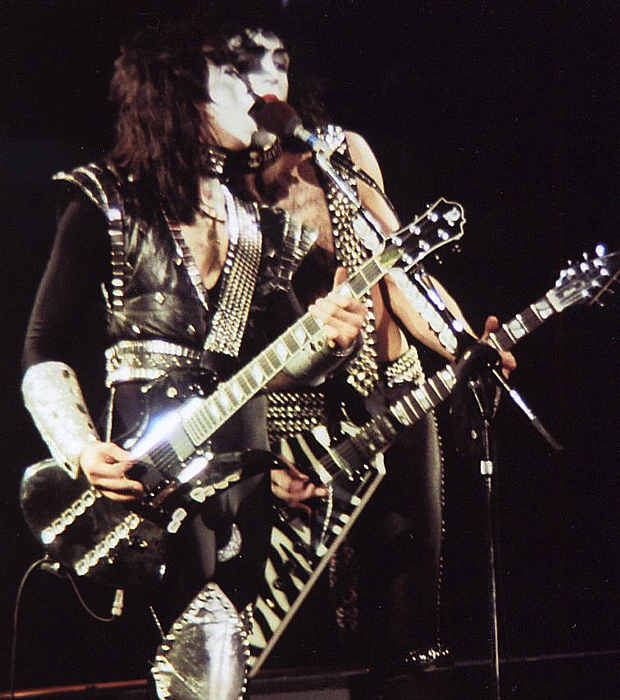
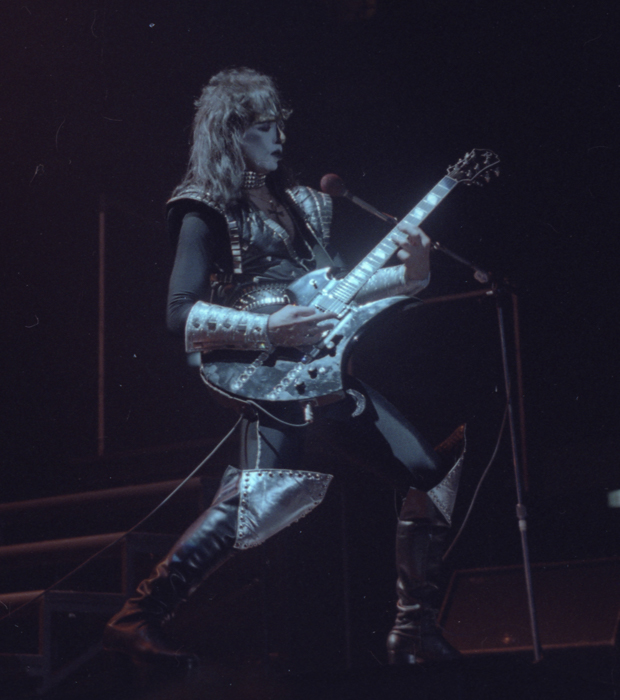
The Lick It Up album/tour cycle saw the start of an endorsement deal between Paul and B.C. Rich, his first since the split from Ibanez. An ad featuring the Mockingbird appeared in the tour books for both the European and American leg of the tour and in a 1984 Japanese B.C. Rich brochure both Paul and Bruce are listed among the artists playing B.C. Rich. Since Paul was pictured with the Mockingbird in the tour book it was only fitting that it also made the trip to Europe. The Hamers and the Eagles were still the clear favorites, but compared to the 10th Anniversary Tour the backup Mockingbird was suddenly everywhere.
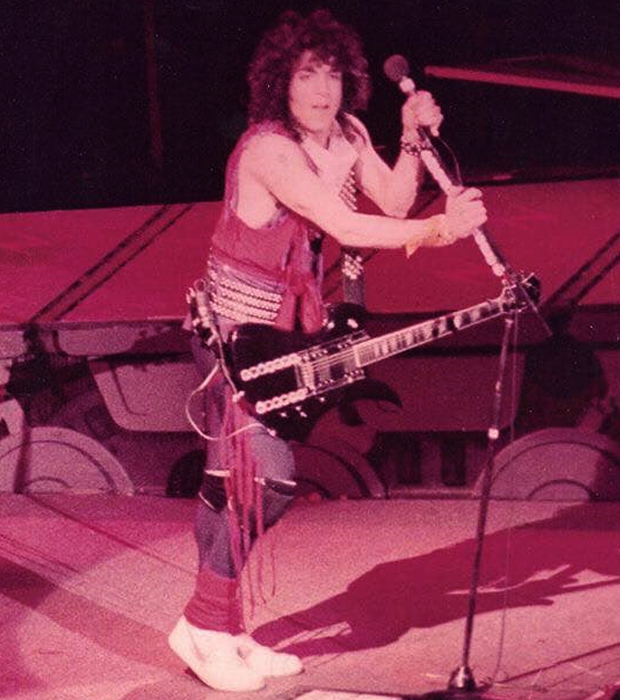
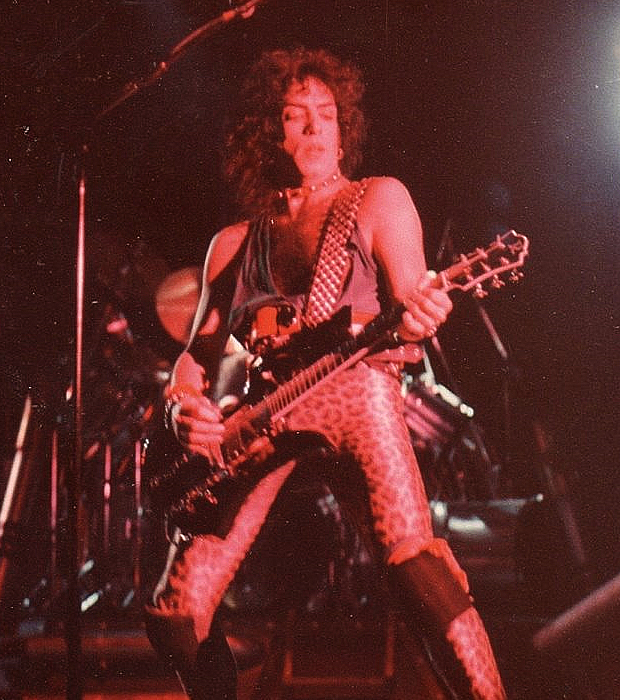
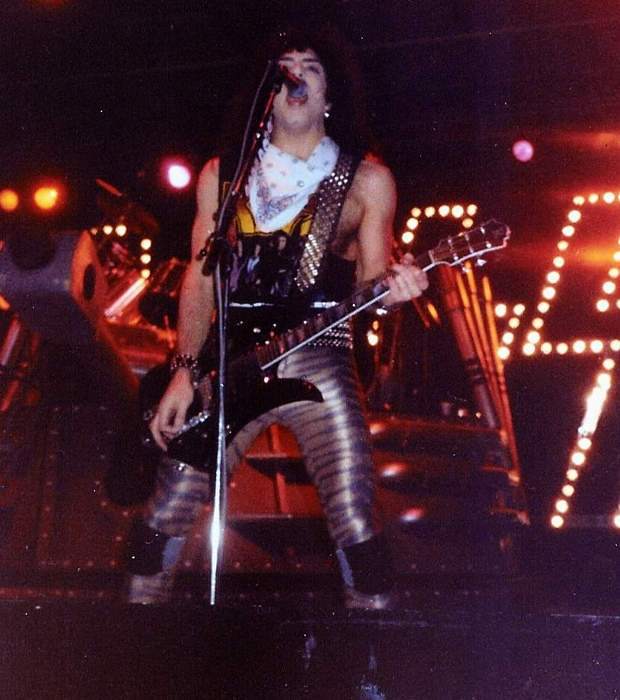
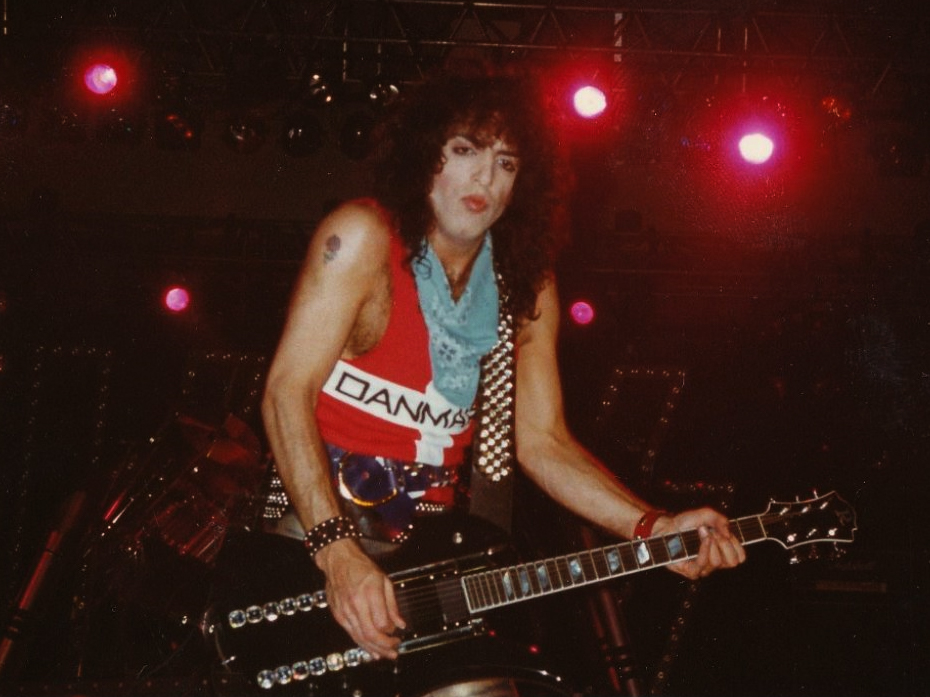
This trend of more use continued during the US leg of the tour. For a couple of months the Mockingbird seems to have been something of a favourite and there are plenty of photos. It was still unchanged, Grover Rotomatic Imperial tuners and all.
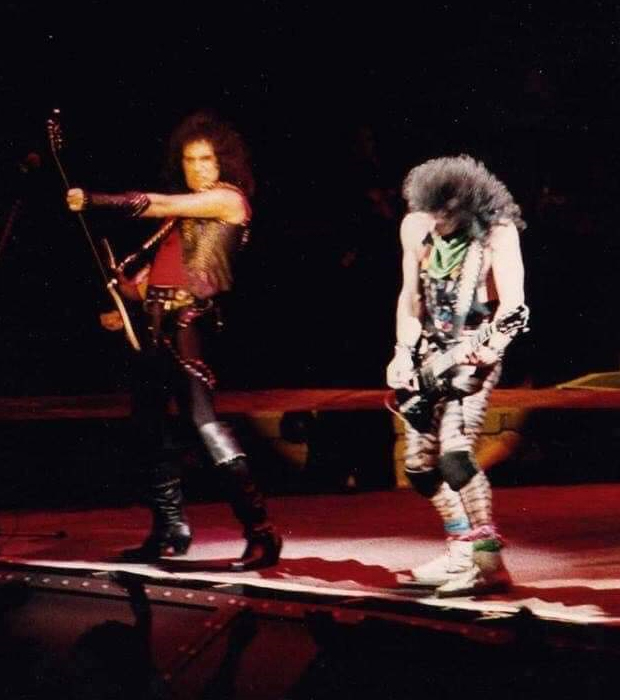
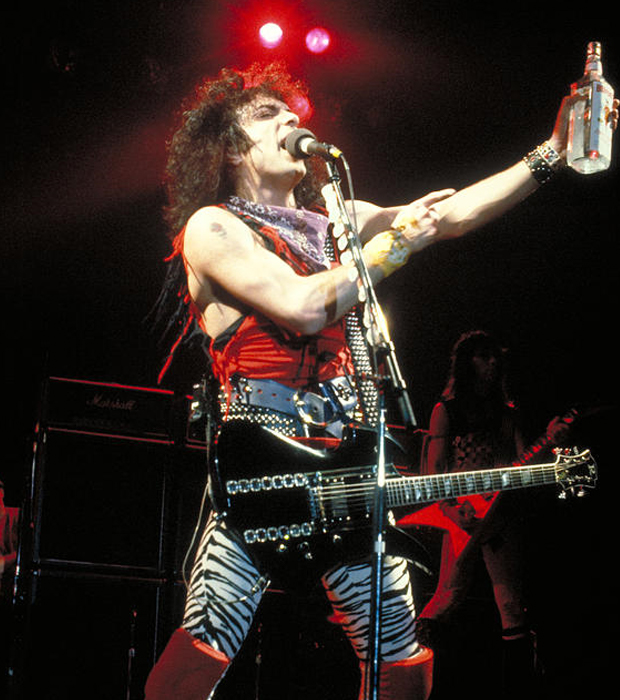
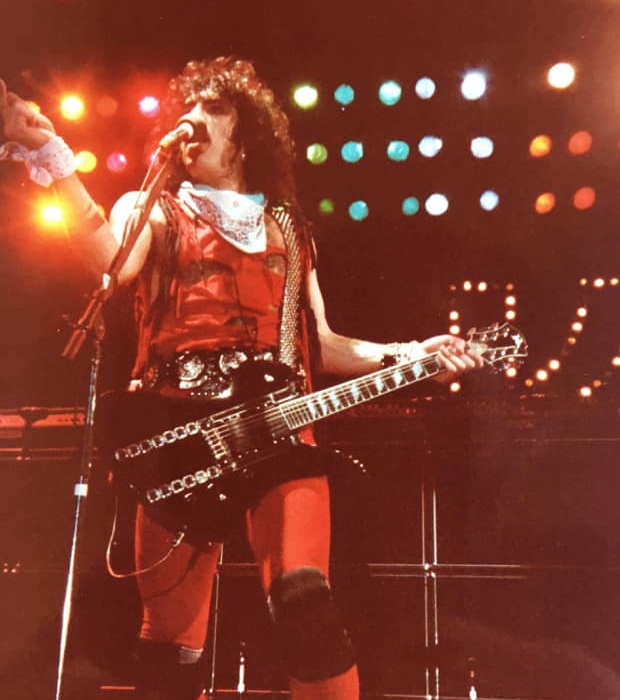
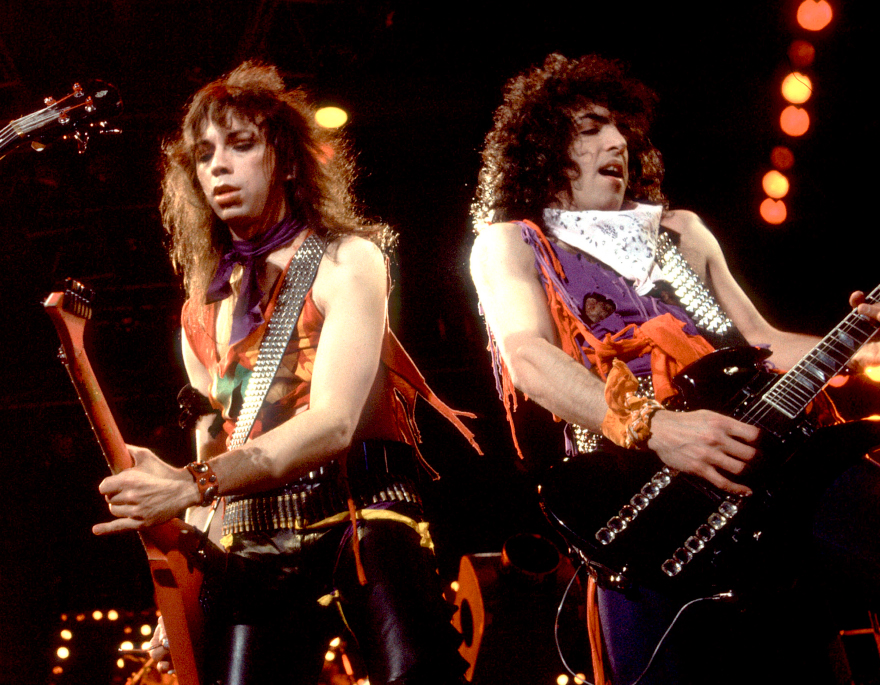
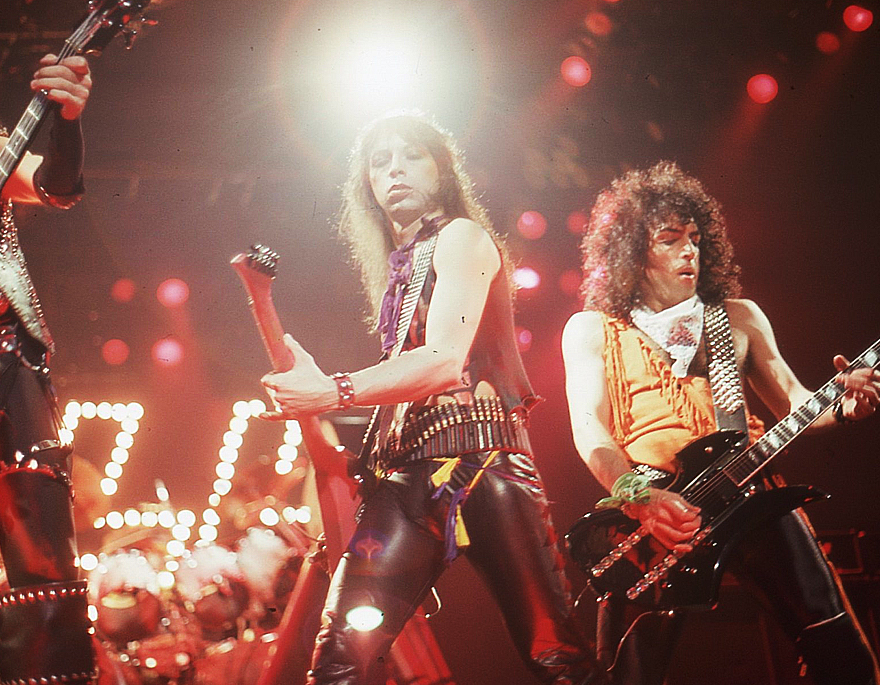
Strangely enough, this didn't carry over to the Animalize tour. The Mockingbird was part of the instrument lineup when the band embarked on the European leg of the tour, but based on the photos we have it was a true backup. As far as we know it only made it on stage once, in Glasgow right at the start of the tour. After that it did feature prominently in what I would consider the classic blue background photo shoot for OKEJ magazine, but that's it. I've looked through as many magazine scans as I have been able find, my own collection of clippings, and the excellent books KISS i Sverige and Klassified, and it seems as if the Mockingbird is only captured on stage that one time. (Incidentally, the blue background photo shoot is probably the reason for the existence of this site. I fell head-over-heels in love with that guitar when I saw it in the pages of OKEJ magazine in 1985.)
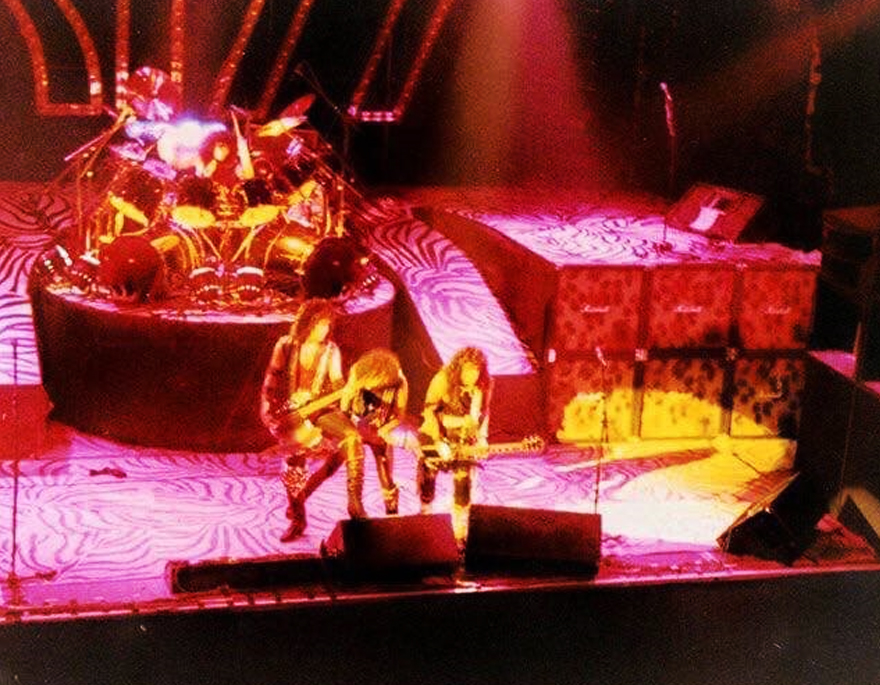
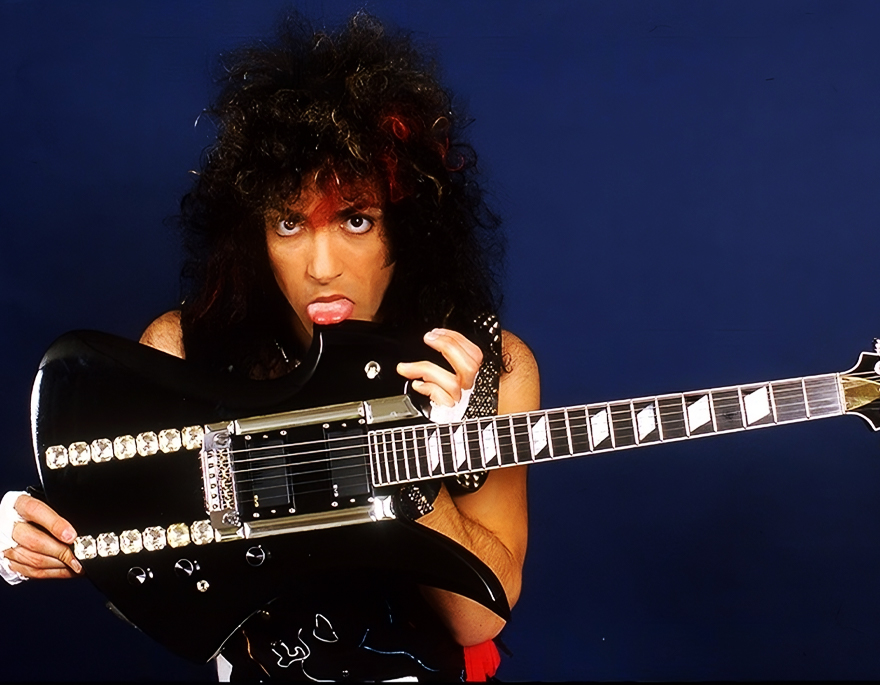
This trend of relatively little use continued as the band embarked on the American leg of the tour. So far we know of only two occasions when the Mockingbird was actually used in the late stages of 1984.
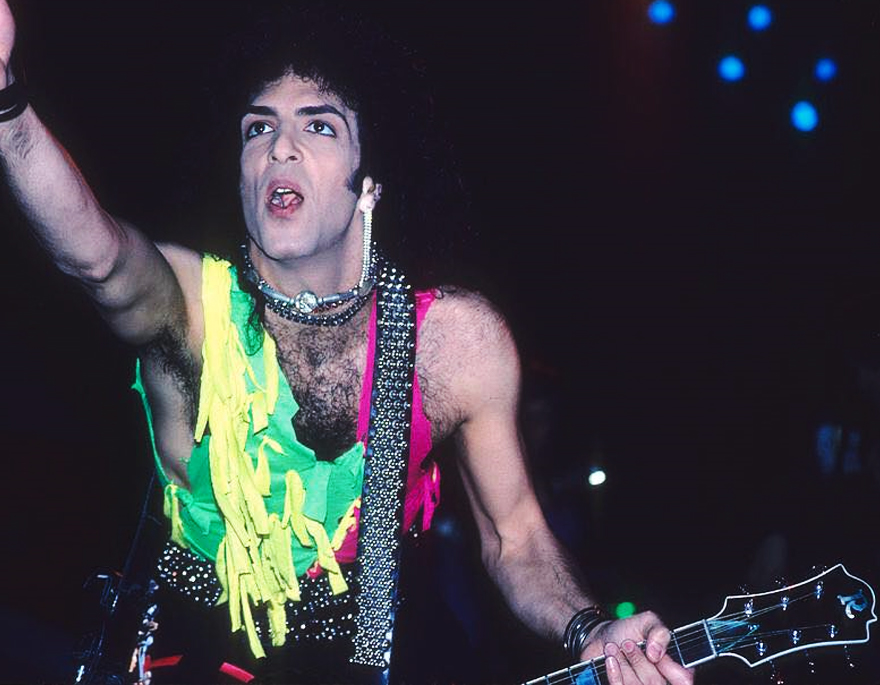
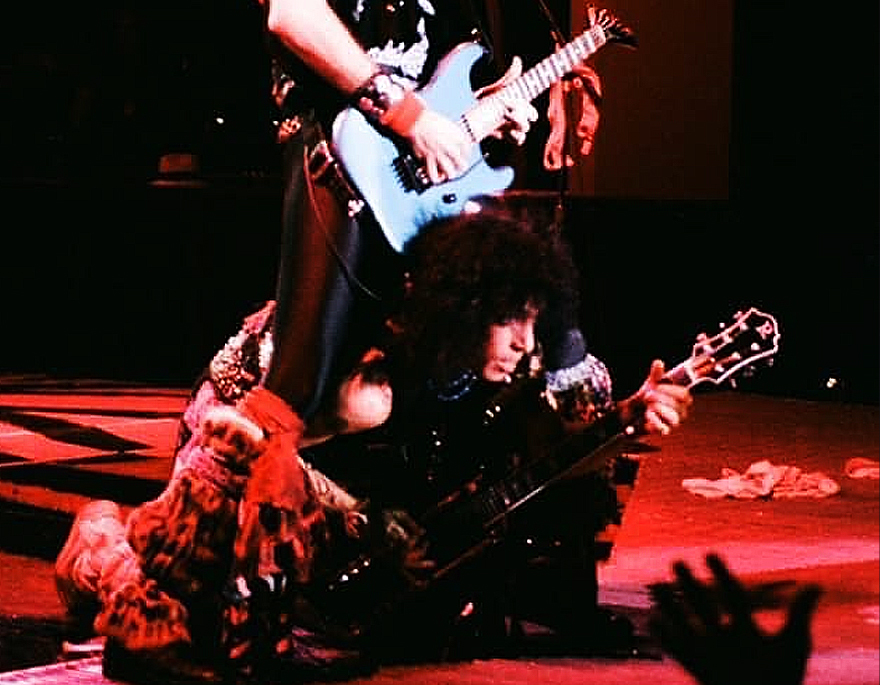
Alas, as the US leg of the Animalize Tour progressed Paul started moving more and more towards the glittery and color-enriched look that would later characterize Asylum. And right at the end of the tour the Mockingbird suffered because of it. Having remained virtually un-changed through two-and-a-half years the poor guitar suddenly got some reflective stickers between the rhinestones below the bridge, a change that we can more or less date to the last week of March 1985. It was not a good look. As the photo from East Rutherford shows Paul had now grown weary of the toggle switch on the upper "horn" and taped it down so that it (hopefully) couldn't move.
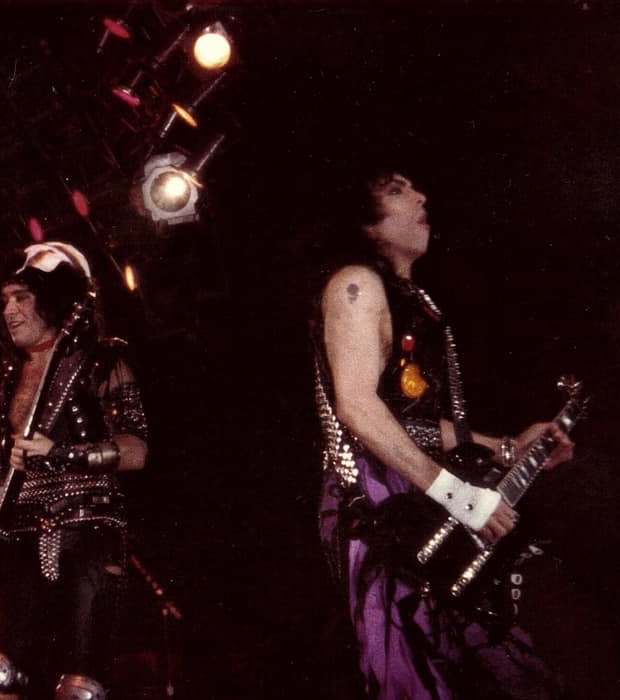
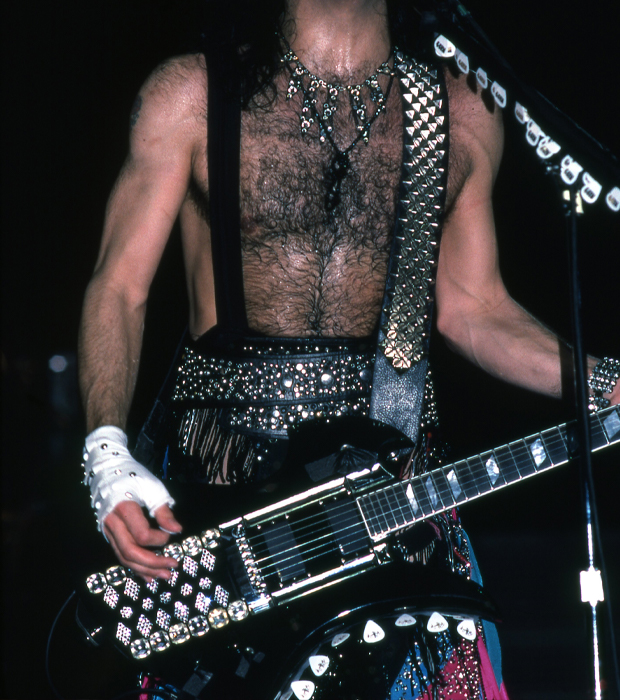
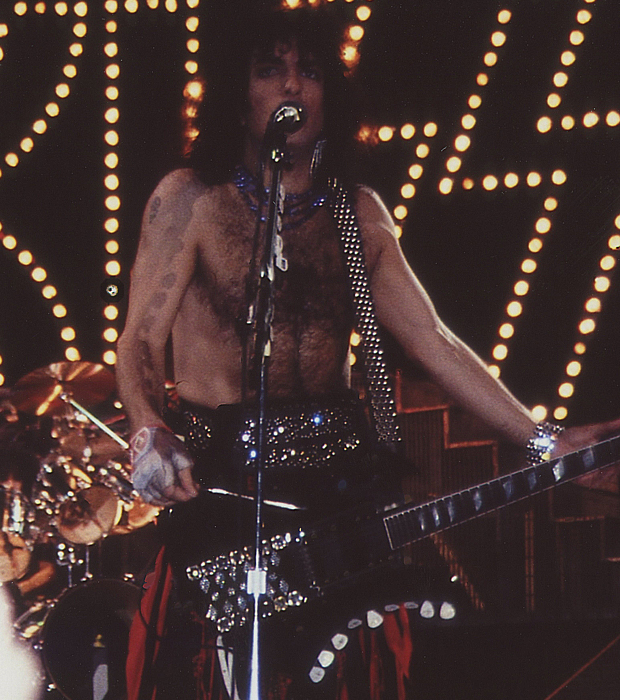
The Mockingbird was retired after the end of the Animalize Tour. It was auctioned in the Butterfields Auction in 2001 as lot 1137. In the descriptive text it suggests that it was used up until 1986 but I find that highly unlikely.
